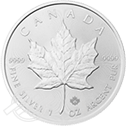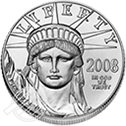Why Paper Money Fails
There’s nothing like the feel of cold, hard cash in your hands. Holding a wad of bills may provide a sense of empowerment, as you feel the texture and weight of the money in your hands. For a moment now, however, try to take a different view. Imagine that in your hands is not money, or cash, but rather a stack of IOUs or promises. Doesn’t have quite the same ring to it now does it?
The fact is, paper money is exactly that: IOUs on paper. These fiat currencies have a strong tendency to fail, especially over time, and with good reason. Here are four some simple reasons why paper money is not and should not be a long-term solution for global exchange and commerce:
- Fiat, or paper money, is created by and labeled as legal tender by governments or central authorities.
- Paper money is not tied to any commodity or asset. In other words, there is nothing backing up the value of paper money.
- Fiat currency has only extrinsic value-that is to say that its value is determined by its issuing authority and users of the currency.
- There are no limits on how much paper currency can be created by a government or central authority.
Perhaps the two most problematic issues of the above are the fact that fiat currencies are not “backed” by assets with intrinsic value and the fact that they can be created out of thin air with the push of a button. This presents a very simple but very significant problem.
The laws of supply and demand dictate that as supplies shrink while demand remains constant or increases, prices should rise. On the flip side, it also dictates that as supplies increase while demand remains constant or decreases, prices should fall.
Central banks all over the globe have used manipulation of the money supply in order to boost or reign-in economic growth. The last decade, filled with ultra-low interest rates and massive quantitative easing, is a prime example of how governments can flood their economies with money to try to spur growth. Whether or not such measures actually work is very debatable, but either way it creates a situation in which more dollars are put into the system.
This increase in supply, in turn, can drive the value of each unit of currency lower. Because these units of currency are not directly tied to some hard, physical asset like gold, they can be easily created by central banks and without limit. As the value of each unit of currency moves lower, your dollars buy less and less goods and services.
The U.S. Dollar has already lost most of its value over the last several decades. With ongoing deficits and a lack of hard assets to back up the currency, it may continue to decline in value, taking your purchasing power along with it.
This is one of the reasons that hard, physical assets like gold need to make up a significant portion of your portfolio. Gold has been considered a reliable store of wealth and value for centuries, and may be the only real form of money there is.
Adding this key asset class to your holdings has never been easier. Speak with an Advantage Gold account executive today about how gold may protect your wealth and purchasing power. Our associates are here to answer any questions you may have, and can even show you how to incorporate this important asset class using an IRA account.
Don’t wait for further declines in the value of your dollars. Explore your options for gold ownership today. Call Advantage Gold at 1-800-341-8584 to get started now.
Tags: advantage gold, cash, central banks, fiat currency, gold, interest rates, ious, legal tender, paper currency


